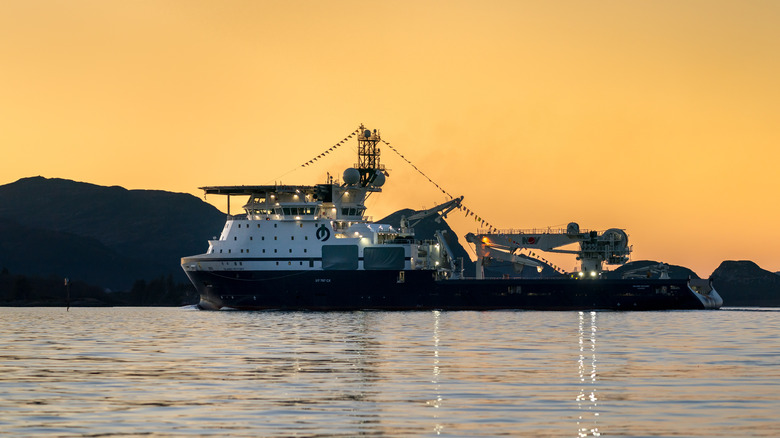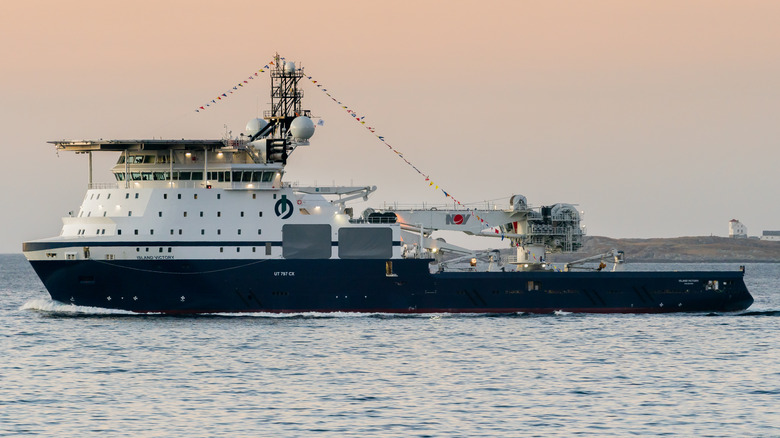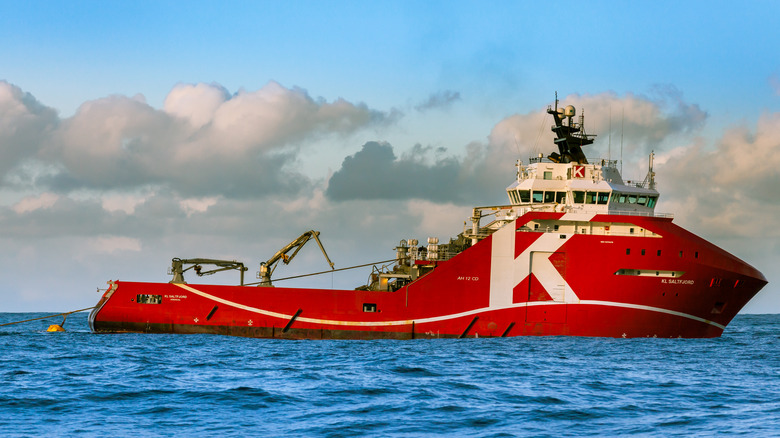What Is The World's Largest Tugboat And How Much Weight Can It Move?
Tugs are the workhorses of our canals and harbors. These powerful boats do everything from carrying out dangerous salvage operations to maneuvering massive ships around crowded ports. But what are these boats capable of, and what is the biggest tug in the world? Let's look at the power aspect first. The pulling power of a tug is measured by a metric called "bollard pull." It's similar to the horsepower measurements we use for other vehicles, and is taken by attaching a strong line from the tug to a fixed mounting point and seeing how much force the tug can apply to it. Measuring equipment on the rope calculates the boat's bollard pull rating. There are two types of tests: static tests are measured at full power at the start of the test, and continuous tests measure the pulling power over ten minutes. As a benchmark, modern average-sized tugs will have a bollard rating of around 110 metric tons.
Bearing this in mind, we can get an idea of just how phenomenally powerful larger tugs are when we look at the bollard pull of the world's largest tug — The Norwegian flagged Island Victory. This giant among tugs has a record bollard pull rating of 477 metric tons (mt). However, figures alone can be meaningless without proper context. To fully understand what all this power means in real life, let's take a closer look at the Island Victory and what makes tugboats able to tow large ships.
The Island Victory is more than a tug
The Island Victory was delivered in February 2020, and is officially classified as a multipurpose offshore vessel. This means this ship is capable of much more than just pulling barges and ships around. As well serving for basic tug work, the Island Victory has a 250-ton crane and massive chain hauler and can act as an operating base for deep-water remote-operated vehicles. The 405-foot vessel can sleep 110 people and also features a helipad. In comparison, the US Navy's Boomin' Beaver tugs are 19 feet long.
In terms of power, the Island Victory has a staggering 42,880 hp it has at its disposal. This comes via a hybrid system with two RR Bergen engines at its heart. So, with all this power available, just how much weight can the Island Victory move? While there are no official figures available on this, we can make a calculated estimate based on some known metrics. Tugboats can typically pull vessels of 1,000 times their weight. This means that the Island Victory with a deadweight of 5,686 tons could theoretically move a weight of almost 6 million tons. For context, the biggest ship ever built — the Seawise Giant — had a deadweight of about 564,000 tons. The Island Victory could pull ten of them at once.
The Island Victory's challengers
Island Victory's 477-mt bollard pull rating is a record for towing power. However, there are some other vessels that boast some stunning stats of their own. Coming in a close second is the Far Samson with a bollard pull of 423 metric tons; this was the previous holder of the record and boasts an impressive 41,000 hp. Another awe-inspiring vessel is the 6,776-gross ton Boka Falcon, which has a bollard pull of 403 mt courtesy of its 29,502 hp rating. A ship that boasts a similar performance to the Falcon is the Lewek Fulmar with a bollard pull of 402.4 metric tons. Power-wise the ships are also all but indistinguishable, with the Lewek Fulmar able to draw on an impressive 29,220 hp.
Dipping under the 400-mt mark takes us to the KL Saltfjord with its bollard pull of 397 mt. The 312-foot vessel boasts an impressive 36,200 hp. Finally, let's shuffle down the order a bit and see just what a "normal" larger-sized tug can achieve. Two tugs that demonstrate how performance translates into real world applications are the Dutch Alp Guard and Italian Carlo Magno with 285 and 155 metric tons of bollard pull, respectively. These boats showed just how valuable tugs are when they played an instrumental role in moving the Ever Given — one of the biggest ships in the world — when it blocked the Suez Canal.


